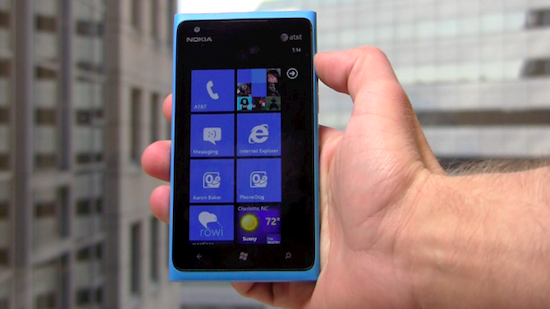
The Nokia Lumia 900 is a beautifully designed device, and it's the most excited I've been about a mobile device launch since the HTC EVO 4G in 2010.
To date, most Windows Phones have been relatively boring, toned-down "sibling" versions of other devices; a testament to the fact that Android-heavy OEMs don't see a lot of return on investment yet. But Nokia's different. The Finnish manufacturer has staked their reputation on Windows Phone, and given the state of the company over the past few years, it's a very pricey gamble.
For Nokia, the Lumia 900 is a comeback story. Unlike other OEMs that release phones just to please the product cycle, this is Nokia's chance in the US market, and they're well-aware of this. Shortly after launch, the company identified an issue with the LTE data connectivity (more on that later). Instead of sweeping the issue under the rug (cue "you're holding it wrong" references), Nokia offered $100 AT&T bill credits to every consumer that purchased the device - essentially making the Lumia 900 free. It's this kind of aggressive response that proves that Nokia's in it for the long haul.
The Nokia Lumia 900 packs a 1.4 GHz single-core processor, 4.3-inch AMOLED display with Nokia's ClearBlack technology, an 8-megapixel camera with 720p HD video recording and a Carl Zeiss lens, and 4G LTE connectivity on AT&T in a package that retails for a jaw-dropping $99.99 with a two-year agreement. Can the Lumia 900 help Nokia rebuild their reputation in the United States?
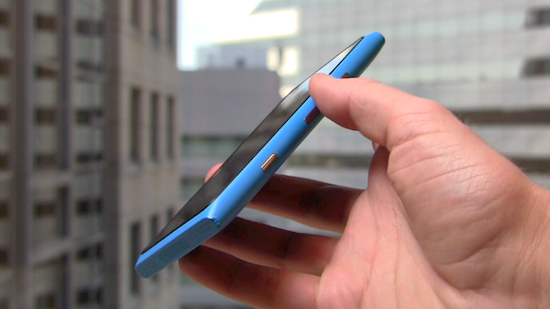
Lumia 900 ships in a polycarbonate shell which does a great job of bridging the gap between cheap plastic handsets and the too-fragile-at-times iPhone 4 and 4S. It's durable, but still retains a minimalistic and clean look. The left side is clear of buttons, while the right spine houses the volume rocker, power button, and camera button. The top offers the 3.5mm headphone jack, microUSB charging port, and microSIM card slot, while the bottom contains the speaker. If you're bothered by scuffs, take note: the chrome around the camera lens scuffs immediately. Within hours of getting the Lumia 900, the camera area looked as if it had been dragged across pavement.
In the box, you'll get an AC adapter, USB cable, SIM card tray tool, and manuals. Nothing particularly exciting, though the design of the adapter is unique.
Windows Phone has seen some great improvements since the upgrade to Mango (7.5), and perhaps more importantly, I'm impressed with Microsoft's gung-ho effort to bring the OS up-to-date as quickly as possible. Referred to as Metro UI, the interface is incredibly smooth, and offers some personalization options like the ability to change system colors and modify the color of the background from dark to light. Android users or those used to hacking and tweaking their devices may be disappointed here, as it's clear the OS is designed for the minimalist at heart.
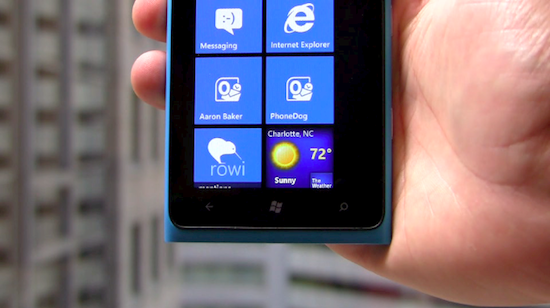
Sporting 70,000+ apps, Windows Marketplace isn't quite up to par with the App Store and Google Play, but it offers most of the popular apps that you'll find in the other app stores. Within a few minutes, I was able to download my personal favorites (in no order): The Weather Channel, Fandango, Shazam, BBC News, Adobe Reader, FlightAware, Backgrounds, Rowi (which I prefer the most in the Twitter department), Facebook, and USA Today. If you're an app hound, this may not be the platform for you - a quick search yielded no results for Words With Friends, Draw Something, and some of the other popular games available today.
Outside of the app woes - which are quickly becoming less of an issue - there are some quirks that bug me about Windows Phone. For starters, there's no battery meter that you can easily access to get an accurate battery percentage. In order to access it, you have to scroll to "Settings," and click on "Battery Saver." I understand that it could take away from Windows Phone's "get in and get out" mentality, but the fact that there's no option to turn it on or off (like on iOS) bugs me.
Save for some apps that run in the background and a fast app switching tool that can be accessed by pressing and holding the back button, Windows Phone has no multitasking capabilities. You'll notice this right away when you're composing a text message, quickly switch away to check your calendar, and return to find that your message has been deleted. In many cases, you're stuck doing one thing at a time, which is exceptionally annoying when you have to check something on another screen.
Lumia 900 offers an 8-megapixel camera with 720p HD video recording, and despite the Carl Zeiss lens, images were mediocre at best. The phone will be decent for the occasional picture, but it's not going to shine like the HTC Titan II or Apple iPhone 4S. Editing options include the ability to change resolution, saturation, focus mode, contrast, and more.
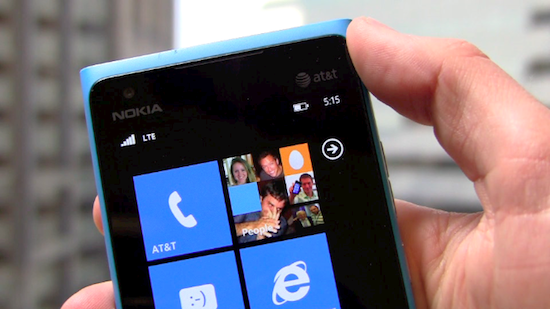
I've been using the cyan blue model, and I love it. I get some unique looks from the suits when I carry it in uptown Charlotte - also known as Banktown, USA - but the change from black, grey, and even white is refreshing. The Lumia 900 has a unibody polycarbonate shell, which often gives off the appearance of it being in a case. If you prefer a more toned down color, black is available now, along with a glossy white model which launches on April 22nd.
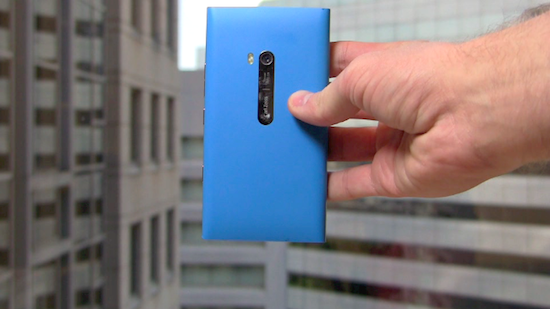
The Lumia 900 is AT&T's first 4G LTE-enabled Windows Phone, and for the most part, it has performed well. In the Charlotte metro area, I've seen download speeds between 5.36 Mbps to 10.84 Mbps, depending on my location. Upload speeds have ranged between 1.22 and 5.85 Mbps. Reception and overall connectivity won't disappoint, either; the Lumia 900 extends Nokia's history of having sound wireless radios. When taking it to a dead zone in South Charlotte, I was able to maintain a call, despite some choppiness and static.
(Note: Nokia has identified an issue with data connectivity on the Lumia 900. Select customers have had issues staying connected to the data network, and Nokia has promised a software update on April 16th. Any customer that has purchased a Lumia 900 will receive a $100 credit to their AT&T bill.)
Lumia 900 packs a 1,830 mAh battery, and despite the AMOLED display and LTE connectivity, battery life has been surprisingly good. With moderate use including calling, text messaging (200-300 messages daily), a great deal of email reading, downloading some apps, browsing the web, and snapping a few pictures, I was able to make it roughly 12 hours before the critical battery warning flashed on the screen. A very respectable number for an LTE-enabled handset.
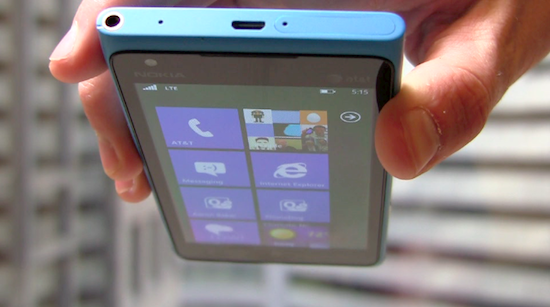
This is make or break time for Nokia, particularly in the US market, where their inability to ink high-end smartphone partnerships with carriers in recent years has diminished their once-powerful name to articles referencing their demise. It's a pricey gamble, but if Nokia releases high-end phones like the Lumia 900 into the American market, continues to price them aggressively, and markets them appropriately both in-store and through typical channels, I can see them regaining a footprint. Windows Phone still has some trouble areas that need to be hammered out, but all in all, I'm really pleased with the Nokia Lumia 900.
What's Good: Excellent build quality; great price point; strong battery life for a 4G LTE smartphone; nice display.
What's Bad: Camera could use some work
The Verdict: The Nokia Lumia 900 is the best Windows Phone yet, and thanks to great build quality and a great price point, offers a real chance for Nokia to regain some footing in the US smartphone market.